Thinking About the Year
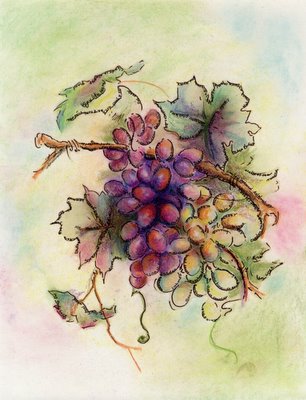 "What lies behind us
"What lies behind usand what lies before us
are tiny matters
compared to what
lieswithin us."
---Ralph Waldo Emerson
The tradition of preparing for the New Year includes reviewing the past year and considering a direction for the coming year. Although many years ago my New Year’s resolution was to never make a New Year’s resolution again and, by the way, that is one resolution I have kept, I still think review and assessment are appropriate.
As I looked back over this year, some of the things I have looked at are the joys and sorrows, the hopes and dreams, as well as some of the problems related to being ill and also some of the benefits. Once I made the effort to collect all this data it seemed to me that I should do something with it. I chose to outline a cluster of grapes with the words I collected in my assessment, turning them into a sketch.
Grapes are among my favorite things. I enjoy them in decoration. I love seeing the rows of grapes in the spring and fall and making grape juice in our steamer. I am drawn to the spiritual concept of John 15, of God being the vine and we as spiritual seekers being grafted to the vine and gaining our nourishment and strength from that connection. Grapes represent this connection which is very important to me.
In my year-end sketch the benefits are the purple grapes; joys are the golden grapes; sorrows and problems are the green and bronze leaves. They work together to make a whole.
Life is an opportunity, benefit from it.
Life is beauty, admire it.
Life is bliss, taste it.
Life is a dream, realize it.
Life is a challenge, meet it.
Life is a duty, complete it.
Life is a game, play it.
Life is a promise, fulfill it.
Life is sorrow, overcome it.
Life is a song, sing it.
Life is a struggle, accept it.
Life is a tragedy, confront it.
Life is an adventure, dare it.
Life is luck, make it.
Life is too precious, do not destroy it.
Life is life, fight for it.
-----Mother Teresa


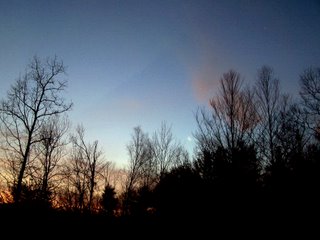 The Salutation of the Dawn
The Salutation of the Dawn As the sun begins to climb, the sky is infused with gold and salmon light.
As the sun begins to climb, the sky is infused with gold and salmon light. In these quiet moments I realize that I am in many ways set free by my illness. I have received a gift of time…. Time to explore the woods and meadow that are visible from my window. The camera draws me into a new dimension. In part it ties me to its lens and in a way it sets me free by opening my mind to see things in a different way. I am beginning to be aware of the same mix of freedom and control in every part of my life. Perhaps it is most important to recognize and be aware of this, to be aware of reality, to open my eyes to beauty and continue to look forward to possibilities.
In these quiet moments I realize that I am in many ways set free by my illness. I have received a gift of time…. Time to explore the woods and meadow that are visible from my window. The camera draws me into a new dimension. In part it ties me to its lens and in a way it sets me free by opening my mind to see things in a different way. I am beginning to be aware of the same mix of freedom and control in every part of my life. Perhaps it is most important to recognize and be aware of this, to be aware of reality, to open my eyes to beauty and continue to look forward to possibilities.



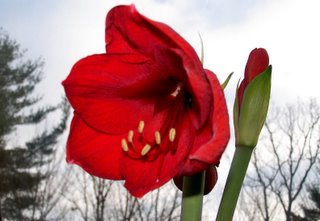
 Sometimes it is good to open up and take a good look at what we have learned and what is still to be learned.
Sometimes it is good to open up and take a good look at what we have learned and what is still to be learned.


 The river drainage arises out of the discovery last spring of a sinkhole thirty feet wide and six feet deep in the Swinging Bridge Reservoir, which is a few miles upstream. That reservoir was drained for safety and repairs and the flow downstream has been affected.
The river drainage arises out of the discovery last spring of a sinkhole thirty feet wide and six feet deep in the Swinging Bridge Reservoir, which is a few miles upstream. That reservoir was drained for safety and repairs and the flow downstream has been affected. Later in the day we spotted two mature Bald Eagles soaring high above the cliffs at Hawks Nest. Gliding and spiraling through the air currents that rise from the river their aerial ballet attracts the attention of tourists and natives alike who stop simply to enjoy the beauty and grace of their exhibition.
Later in the day we spotted two mature Bald Eagles soaring high above the cliffs at Hawks Nest. Gliding and spiraling through the air currents that rise from the river their aerial ballet attracts the attention of tourists and natives alike who stop simply to enjoy the beauty and grace of their exhibition.



 In the city our primary visitors were English Sparrows, House Finches and Rock Doves. So far, we have not had a single one of those city residents travel out here to our feeders.
In the city our primary visitors were English Sparrows, House Finches and Rock Doves. So far, we have not had a single one of those city residents travel out here to our feeders.


 The roads have been plowed and most of them are clear and dry so it was easy going until we reached Rio Dam. As we began taking our pictures, the wind danced circles around us nipping our noses, ears and fingers. The lake sparkles, the ice reflecting the sun’s rays as well as the darker colors of the hillsides. My down jacket no longer feels warm. The cold seeps through my leather gloves. I am eager to get back into the sheltered warmth of the car.
The roads have been plowed and most of them are clear and dry so it was easy going until we reached Rio Dam. As we began taking our pictures, the wind danced circles around us nipping our noses, ears and fingers. The lake sparkles, the ice reflecting the sun’s rays as well as the darker colors of the hillsides. My down jacket no longer feels warm. The cold seeps through my leather gloves. I am eager to get back into the sheltered warmth of the car. We search the trees along the riverbank for eagles. The many small white clumps of snow still clinging to the hemlocks and pines get our full attention but not a bald eagle to be seen
We search the trees along the riverbank for eagles. The many small white clumps of snow still clinging to the hemlocks and pines get our full attention but not a bald eagle to be seen  Chickadees call to us from a berry thicket; two male cardinals, “chipping” steadily from their retreat among hemlocks near the river display a splash of crimson against the snow laden dark green trees. Their calls blend with the winds, the icy clatter of water cascading over stones and the cheerful murmur from the calmer currents of the river to bring us a winter symphony.
Chickadees call to us from a berry thicket; two male cardinals, “chipping” steadily from their retreat among hemlocks near the river display a splash of crimson against the snow laden dark green trees. Their calls blend with the winds, the icy clatter of water cascading over stones and the cheerful murmur from the calmer currents of the river to bring us a winter symphony.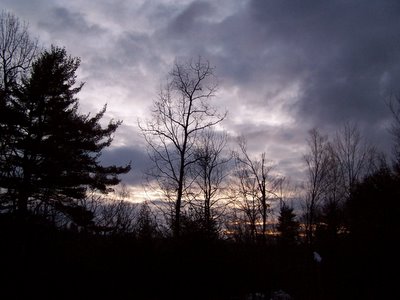
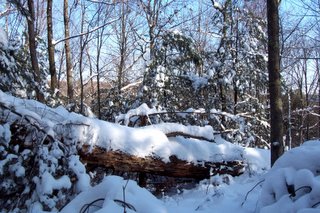 “All color seems bleached out of the earth, and what was a few weeks since a glowing landscape has now become a still bas-relief. The hills stand unveiled; the beautiful leaves are gone, and the eye seeks in vain for a trace of the brilliant drapery of autumn- even its discolored shreds lie buried beneath the snow. The fields are all alike: meadow and cornfield and hop-ground, lie shrouded and deserted; neither laborers nor cattle are seen a-field during these months of our year. Gray lines of wooden fences, old stumps, and scattered leafless trees are all that break the broad, white waste, which a while since bore the harvests of summer.” --- Susan Fenimore Cooper, Rural Hours page 284.
“All color seems bleached out of the earth, and what was a few weeks since a glowing landscape has now become a still bas-relief. The hills stand unveiled; the beautiful leaves are gone, and the eye seeks in vain for a trace of the brilliant drapery of autumn- even its discolored shreds lie buried beneath the snow. The fields are all alike: meadow and cornfield and hop-ground, lie shrouded and deserted; neither laborers nor cattle are seen a-field during these months of our year. Gray lines of wooden fences, old stumps, and scattered leafless trees are all that break the broad, white waste, which a while since bore the harvests of summer.” --- Susan Fenimore Cooper, Rural Hours page 284. 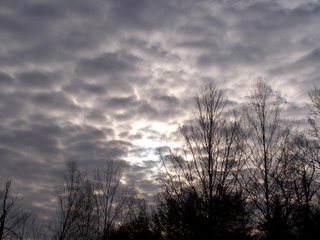 Since I love reading nature journals, I was delighted to discover the one I quoted above, a voice from one hundred fifty years ago reaches me through the pages of “Rural Hours” by Susan Fenimore Cooper. First published in 1850 her reflections on New York excerpted from her diaries traces the changing seasons in and around Cooperstown in 1848 and 1849. Susan took daily walks in all seasons. She recorded her observations of natural things -- birds, wildflowers, Lake Otsego -- as well as passing events in her diary. Her work touches on my interest in American History; New York History journaling and natural history.
Since I love reading nature journals, I was delighted to discover the one I quoted above, a voice from one hundred fifty years ago reaches me through the pages of “Rural Hours” by Susan Fenimore Cooper. First published in 1850 her reflections on New York excerpted from her diaries traces the changing seasons in and around Cooperstown in 1848 and 1849. Susan took daily walks in all seasons. She recorded her observations of natural things -- birds, wildflowers, Lake Otsego -- as well as passing events in her diary. Her work touches on my interest in American History; New York History journaling and natural history.
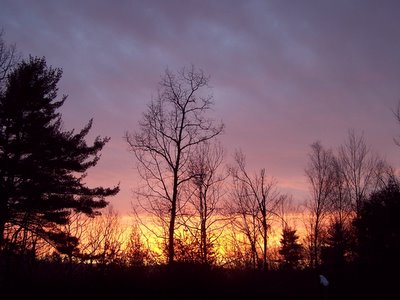 This grand show is eternal. It is always sunrise somewhere;
This grand show is eternal. It is always sunrise somewhere;



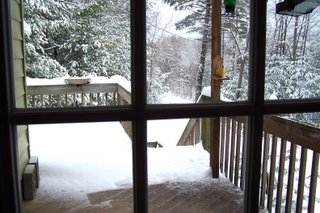
 The day has been clear and beautiful; cloudless bright azure skies. The air is filled with the sounds of birds that fill every possible perch on the feeders. Winter sunshine has not been able to overcome the chill air and melt the snow.
The day has been clear and beautiful; cloudless bright azure skies. The air is filled with the sounds of birds that fill every possible perch on the feeders. Winter sunshine has not been able to overcome the chill air and melt the snow.



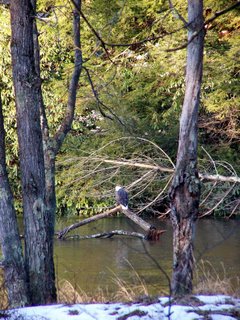

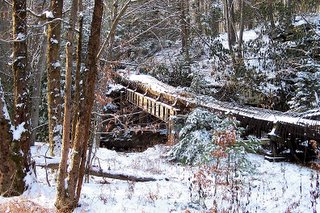 An ancient wooden flume runs for quite a distance along the river. Not particularly picturesque although the snow and moss cover it with a smidgen of charm. The flume is falling apart from years of neglect.
An ancient wooden flume runs for quite a distance along the river. Not particularly picturesque although the snow and moss cover it with a smidgen of charm. The flume is falling apart from years of neglect.  On July 15, 1910, a engineering representative left on a tour of the South to study the possible use of wooden water pipes in the Conway water system. It was felt that wooden pipes made the water taste purer and sweeter than metal and had a life expectancy equal to that of metal. Constructed of staves held together by steel bands and covered with a thick layer of asphalt, wooden pipe was cheaper and was not thought to be effected by acids or minerals in the water.
On July 15, 1910, a engineering representative left on a tour of the South to study the possible use of wooden water pipes in the Conway water system. It was felt that wooden pipes made the water taste purer and sweeter than metal and had a life expectancy equal to that of metal. Constructed of staves held together by steel bands and covered with a thick layer of asphalt, wooden pipe was cheaper and was not thought to be effected by acids or minerals in the water.


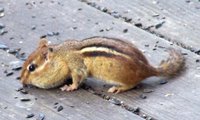

 Our route takes us down the hill along the Mongaup river to the Delaware river where we turn to southeast toward New Jersey
Our route takes us down the hill along the Mongaup river to the Delaware river where we turn to southeast toward New Jersey 
 Layer upon layer of clouds, each layer moving at a differing pace across the sky. A thin layer of clouds momentarily obscuring the sun, then letting it peek through again. Contrasts of dark and light seem to compel the lens to focus their direction in an attempt to record the stark beauty.
Layer upon layer of clouds, each layer moving at a differing pace across the sky. A thin layer of clouds momentarily obscuring the sun, then letting it peek through again. Contrasts of dark and light seem to compel the lens to focus their direction in an attempt to record the stark beauty.
